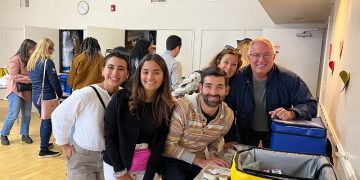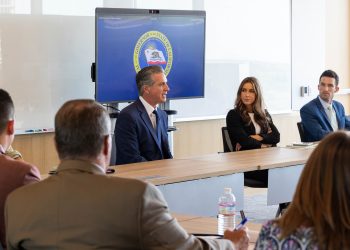There has long been a suspicion that the $68 billion plan to build a 432-mile high speed rail system between Los Angeles and San Francisco was too little, too late. Essentially, some say, it could be the last hurrah for an outdated technology.
“Bullet trains are obsolete, at the end phase of their development,” Rick Canine, an executive of Federal Maglev Inc., claimed in an interview two years ago. His company said it could build a magnetic levitation rail line with a top speed of 300 mph (to the bullet train’s 220 mph), similar to maglev lines already running in Japan and China. Maglev trains run on concrete beds with embedded magnets that repulse other magnets mounted on skis beneath lightweight aluminum passenger cars.
Maglev drew no response at all from the California High Speed Rail Authority.
Now comes Elon Musk, immigrant from South Africa, co-founder of PayPal (later sold to eBay), chairman of the San Francisco Bay area’s Tesla Motors and boss of SpaceX, the suburban Los Angeles company that has changed the resupply of the International Space Station.
Musk agrees that bullet train technology is outmoded and would like to see that project aborted before much money is spent on it.
He doesn’t endorse Maglev, though he probably wouldn’t object. Rather, he suggests a completely new form of transport, essentially the use of a pneumatic tube to whip passenger capsules from place to place at hyperspeeds of almost 800 mph, right around the speed of sound.
Hyperloop, he called his plan, which he insisted in a 57-page report (http://www.teslamotors.com/blog/hyperloop) would cost just a fraction of the bullet train’s projected expense.
Anyone who worked in an old newspaper office should be least somewhat familiar with the technology: editors would stick capsules filled with typed copy into a pressurized tube for virtually instant delivery to a pressroom. Some banks still use similar methods for moving paper.
The hyperloop would use far larger tubes for passenger capsules. Because the distance covered would be hundreds of miles, not dozens of yards, delivery would take a little longer: about 40 minutes to move passengers from city to city.
Yes, there could be overheating problems, as critics have noted, but Musk is also the fellow whose engineers conquered the problem of short range electric car batteries and gets stuff into space at far lower cost than space shuttles ever did.
Then there’s the route he chose: Musk would use 20-foot pylons along the I-5 and I-580 medians, the shortest driving distance between San Francisco and Los Angeles. No intermediate stations for political reasons in cities like Bakersfield, Fresno and Merced, as now planned for high speed rail.
Some have previously urged this much cheaper, swifter route, where the state already owns much of the right-of-way, upon the bullet train but officials never so much as acknowledged those suggestions were made.
So this plan makes some rudimentary sense, especially if the technology turns out to be more efficient than bullet trains. Musk would have to resolve potential safety problems – what if passenger capsules traveling at ultra-high speeds were to collide?
Bullet train authority chairman Dan Richard, in a statement, allowed that “New technology ideas are always worth consideration.” But he tried to toss cold water on Musk, adding that “If and when Mr. Musk pursues his Hyperloop…, we’ll be happy to share our experience about what it really takes to build a project in California, across seismic zones, minimizing impact on farms, businesses and communities and protecting sensitive environmental areas and species.”
It’s also true that the Hyperloop would not move quite as many passengers as the bullet train says it will, with a capacity of 840 per hour.
So this proposal is in its infant phase at best, with many details yet to be worked out and the prospect of going forward only if the bullet train should be derailed by its persistent foes.
Which means no one yet knows whether this plan will join other big California ideas that never became reality even though they had some merit, like moving icebergs here from Antarctica during dry years to solve water shortages or using waves outside river mouths to generate electricity.













